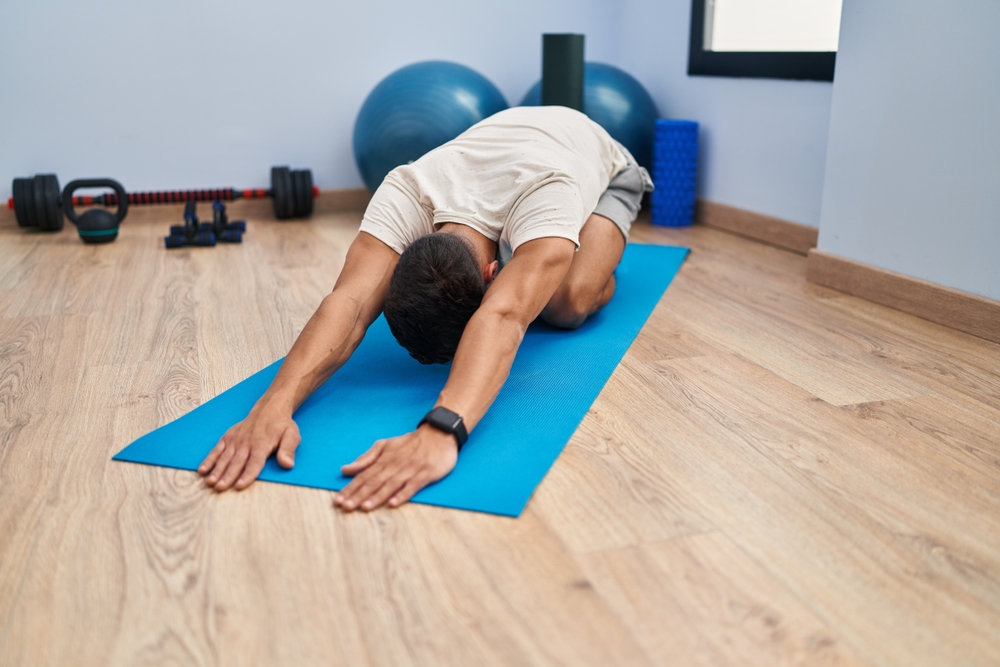New Year’s resolutions are often accompanied by sarcastic jokes about how we don’t stick to them – so much so, that the second week of January has been unofficially dubbed “Quitter’s Day” in its honor.
To be more accurate, research shows that resolutions are kept for an average of about 2-3 months. Only about 13% of people make it to a full 4 months of commitment, and less than 6% of people follow through on their resolutions for the whole year. Yikes.
Does that sound about right for your previous New Year’s resolutions?
If you’re aiming to get fit in the new year, here’s how you can crush those goals well past the average 4-month commitment timeline.
Table of Contents
1. C.L.E.A.R. goals for fitness
2. Identifying your fitness ‘why’
3. Creating a balanced workout design
4. Small steps, big gains
5. Integrating fitness into your daily life
6. Tracking progress and measuring success
7. Overcoming obstacles
8. Seeking community support
Conclusion
The challenge of maintaining New Year’s fitness resolutions
People often lose momentum with their resolutions because they don’t set self-attainable goals (which we talk more about in our blog: “How to Stay Motivated with Your Health Goals Mid-Year“) and because they focus on avoidance-oriented goals instead of approach-oriented goals.

Avoidance-oriented goals revolve around avoiding a negative outcome (I want to lose weight; I want to quit smoking) and approach-oriented goals involve working towards desirable outcomes (I want to be stronger; I want to be able to run without needing to catch my breath).
So, in other words, your success is based on your attitude and approach.
Of course, it also depends on your strategy as well.
You can’t expect to reach an unattainable goal, and like all things “health,” your plan needs to be unique for you.
Let’s walk through how you can make an approach-oriented, attainable, and year-round sustainable fitness plan.
1. C.L.E.A.R. goals for fitness
The attainability of a resolution starts with a C.L.E.A.R. goal. This is an acronym that stands for Collaborative, Limited, Emotional, Appreciable, and Refinable and it sets the stage for the rest of the year.
Collaborative – Your fitness goal should connect you to others or allow you to find a community that supports your goals.
Limited – Create short-term fitness achievements that eventually lead you to the bigger picture so you’re not taking on one giant, year-long task.
Emotional – You should feel strongly about your fitness goals, and that its result is something that will make you feel good.
Appreciable – Your fitness resolution should lead to future goals that you can build on. For example, wanting to run more can start as 1 mile a day and increase to running a marathon down the line.
Refinable – The flexibility to change your goal as your needs do. Things in life change all the time, and if you find that your goal doesn’t suit what you want anymore (or find it too difficult to achieve), you should feel free to adjust it.
C.L.E.A.R. is designed to help you create fitness goals you can keep up with. Make sure you’re picking a resolution that qualifies!
2. Identifying your fitness ‘why’

Your best motivator is yourself. Discovering individual fitness motivations can enhance your commitment and enthusiasm towards a more active lifestyle.
Introspection plays an important role in this process. Take time to reflect on personal goals, whether they revolve around weight loss, stress reduction, or overall well-being.
Experiment with different physical activities and exercises to help pinpoint enjoyable routines that align with your interests. Trying yoga, weightlifting, dancing, or team sports can unveil hidden passions!
Finally, envision the long-term benefits of a healthier lifestyle, such as increased energy, better mental health, or chronic disease management. This can serve as a powerful motivator on your journey.
3. Creating a balanced workout design
Taking pleasure in the workouts you do will help extend the routine beyond your first New Year burst of motivation. Variety can also help keep things interesting.
Incorporate a mix of strength training, cardio, and flexibility exercises into your everyday or weekly workout routine to establish a good exercise balance.
Strength training improves muscle tone and protects your joints from injury. It can also improve your balance, help you manage chronic conditions, and boost your self-esteem. Cardio is great for heart health and endurance, and flexibility improves your mobility and reduces the risk of injury.

Explore diverse activities that both excite you and cover these fitness areas.
That could mean dance classes, outdoor hiking, or yoga. No matter what you pick, let enjoyment be the driving force for your workout routine.
4. Small steps, big gains
Sustainable fitness practices begin with manageable workouts that gradually increase in intensity over time. The key isn’t to start with too much, just enough to challenge yourself a little.
Start with exercises that match your current fitness level to ensure you don’t injure or frustrate yourself. This might include a strength-training routine with squats and pushups. As you build your strength and confidence, you might want to try adding light weights while you do those exercises or increasing the number of repetitions.
This can also work for cardio – start with walking or jogging and then slowly add sprints or increase to longer jog sessions.
This gradual approach not only makes your resolution fitness more sustainable but also helps develop a sense of accomplishment. Remember, the key isn’t the speed of your progress, but consistent progress that you enjoy and want to keep doing long-term.
5. Integrating fitness into your daily life

Approach exercise as a non-negotiable aspect of your day rather than an optional task. Choose a time that aligns with your schedule, be it mornings or evenings.
Schedule specific types of workouts on designated days to ensure a balanced routine that will target multiple muscle groups.
Make your exercise environment inviting to cultivate a positive association with physical activity. This might mean having a well-equipped home gym or finding a scenic outdoor spot.
Try to be flexible – if a planned routine doesn’t happen, embrace the opportunity for a short, impromptu activity. For example, this 10-minute workout from the New York Times can be done anywhere using only your body weight.
6. Tracking progress and measuring success
When measuring fitness success, take a holistic view beyond traditional metrics like numbers on the scale. Better moods, blood pressure, and looser clothing are simple ways to know your fitness journey is proving successful.

For more quantitative data, you can keep a workout journal and note improvements reps, weight lifted, or time spent working out. If you’re tech-savvy, check out the apps from our list of the 10 Best Apps to Boost Your Health. Progress photos can offer an important visual snapshot of your journey as well.
Note that diversifying your tracking methods will also help you gain a well-rounded perspective on your fitness achievements.
7. Overcoming obstacles
Facing common fitness challenges is a natural part of the journey, and having effective coping strategies is the key to overcoming them.
Time constraints: Prioritize short, high-intensity workouts or break long workouts into smaller, more manageable chunks.
Boredom: Regularly switch up your routine to keep things fresh and exciting.
Lack of motivation: Set small, achievable goals and then reward yourself when you hit those milestones.
Packed gym: do training at home, work around peak hours, or look for fitness classes that require a reservation. See more here: 8 Tricks For Working Our When The Gym’s Too Busy.
Injuries: Look for alternative exercises that don’t exacerbate the problem and allow for recovery.
8. Seeking community support
Enlisting the support of family, friends, or a fitness community can help you stay accountable and motivated. Your fitness routine is significantly bolstered by the presence of a strong support system that gives encouragement and enforces accountability.
Turn individual efforts into collective triumphs by celebrating achievements with your support system. It can also provide a safety net during challenging times, offering guidance and reassurance.

Having a workout partner especially adds an element of social connection, making workouts more enjoyable.
Whether it’s a virtual check-in or a gym partner, the importance of a supportive network in sustainable fitness cannot be overstated.
In conclusion…
Embarking on a successful fitness journey involves setting C.L.E.A.R. goals, identifying personal motivations, and creating a balanced workout routine that prioritizes enjoyment.
Finding a community that keeps you accountable and taking small, manageable steps that set you up for long-term success is the key to taking the New Year’s resolution beyond the first few months of the year.
As we delve into the world of fitness, let’s share our journeys, celebrate achievements together, and build a supportive community that inspires and uplifts. Share your story in the comments or find and connect with fellow fitness enthusiasts in your life – because every step forward is a victory worth celebrating!




